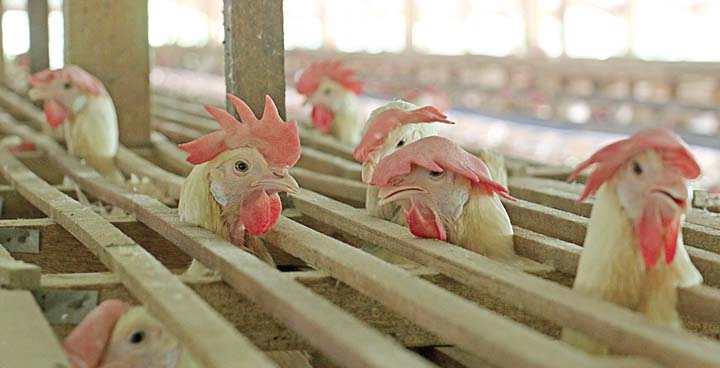
DESPITE a bountiful crop harvest, the country’s farm output in the first half contracted by 2.5 percent as the gap in the livestock and poultry production widened year-on-year, latest government data released Monday showed.
Philippine Statistics Authority (PSA) data showed that the value of the agricultural output from January to June declined to the steepest in five years, or since the 3.6-percent contraction in the first half of 2016.
The value of agricultural production during the six-month period was estimated at P856.644 billion (constant 2018 prices), P21.581 billion lower than last year’s P878.225 billion, based on PSA data.
In the second quarter alone, agricultural production fell by 1.5 percent—a five-year low—due to decline in livestock and fisheries production, according to the PSA.
Second-quarter agriculture output was valued at P435.607 billion, P6.762 billion lower than the P442.369 billion recorded in the April-to-June period last year, PSA data showed.
Record-high crop value
PSA data showed that crop output, which accounted for 57 percent of total farm output in the first half, grew by 3.2 percent to a record-high P492.395 billion from P477.238 billion last year.
The value of rice production during the six-month period rose by nearly 5 percent to P175.916 billion from P167.727 billion while first half corn output was worth P54.461 billion, 6 percent higher than last year’s P50.388 billion.
PSA data also showed that the value of banana output in the first half rebounded to P73.38 billion from P72.547 billion while value of mango production increased slightly to P24.761 billion from P24.579 billion.
Sugarcane production in the first half was valued at P28.482 billion, 8.8 percent higher than the P26.178 billion recorded in the same period of last year, based on PSA data.
Other subsectors down
PSA data showed that the value of livestock, poultry and fisheries productions all declined in the first half, led by 21.4-percent contraction in the output of the livestock sector.
Livestock output, at constant 2018 prices, was estimated at P121.530 billion, P33.037 billion lower than last year’s P154.567 billion as hog output, which accounted for 80 percent of the sector, contracted at a double-digit rate.
The value of hog output during the reference period declined by 26 percent to a 19-year-low of P98.438 billion, a result of the devastation caused by the African swine fever on hog farms nationwide.
Total hog output in the first half shrank by more than a quarter to 827,860 metric tons (MT), the lowest January-to-June period in the past 18 years, based on PSA data.
Despite a 2.5-percent increment in the second quarter, the value of total poultry output in the first half declined by 2.6 percent to P115.04 billion from P118.109 billion.
Chicken production alone was estimated at P78.985 billion, 6.4 percent lower than the P84.472 billion recorded in the first half of last year.
In terms of volume, chicken output declined by 57,840 MT to 835,880 MT—a five-year low—from 893,720 MT last year, according to the PSA.
PSA showed that the value of fisheries output in the first half fell slightly to P127.679 billion from P128.311 billion.
Industry reaction
Philippine Chamber of Agriculture and Food Inc. President Danilo V. Fausto said the government may miss its 2 percent full-year agriculture growth this year given the first half performance of the sector.
Fausto explained that the ASF remains a pressing problem to address as hog farms, especially commercial raisers, remain hesitant to repopulate amid threat of the fatal hog disease.
Fausto said the current Department of Agriculture (DA) leadership must already look beyond its current tenureship to ensure the recovery of the ailing subsectors of agriculture, particularly hogs.
“Ten months from now there will be a new President and two months from now politicians will start filing for their candidacy. The DA must leave the agriculture sector with at least a legacy in the form of roadmaps to provide the private sector a direction moving forward,” he told the BusinessMirror.
Elias Jose Inciong, United Broiler Raisers Association president, said the contraction in the poultry production was expected, but pointed out that he was “surprised” that the decline in output was just 2.6 percent given the drastic drop in poultry demand.
“I do not know if it is a sign of resiliency or there are problems with the data system,” he told the BusinessMirror. “The industry is demand-driven by nature and demand has declined by so much in the past months. Given the extent of the damage to the demand, [the rate of contraction in production] is rather surprising,” he added.

